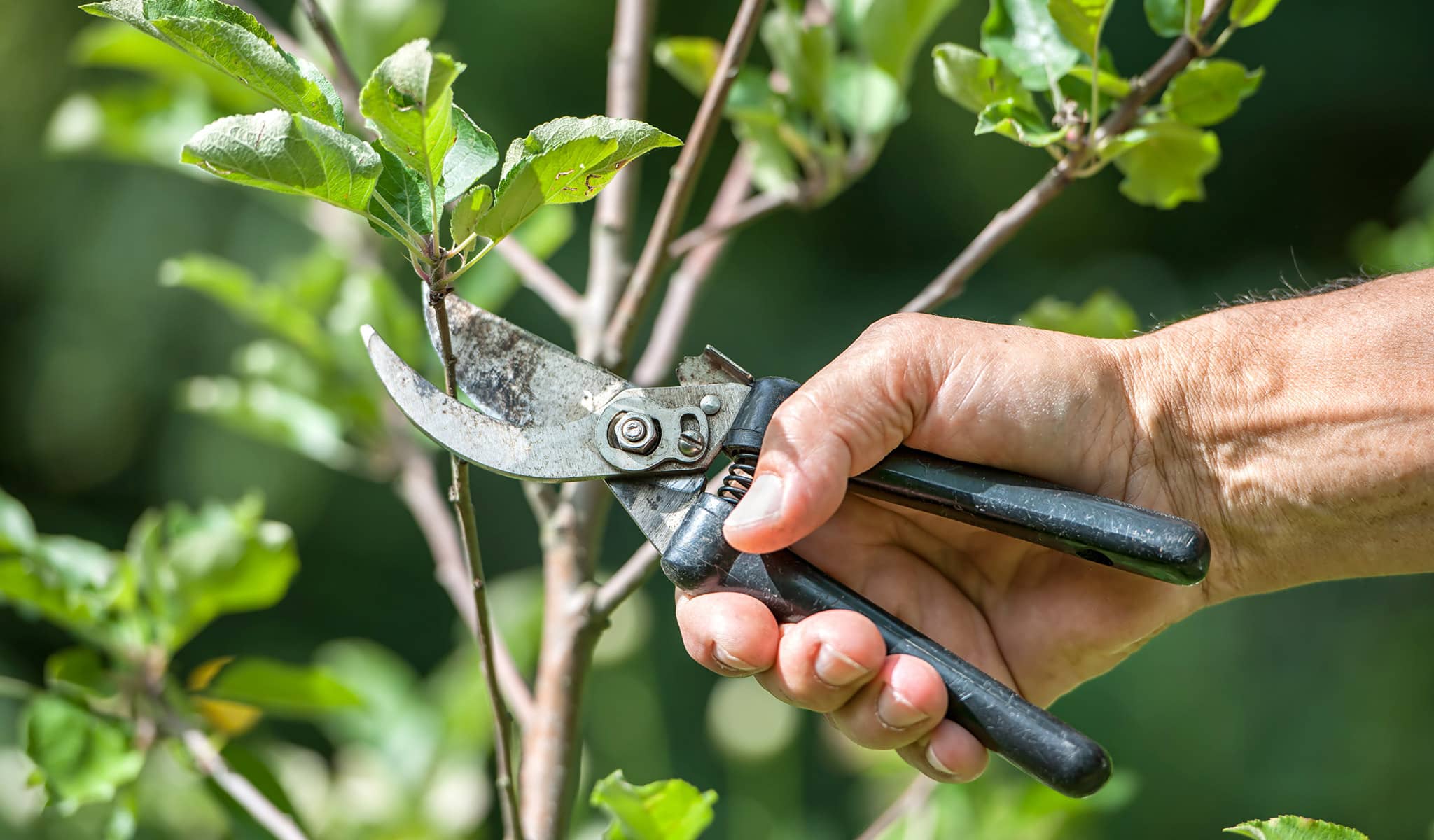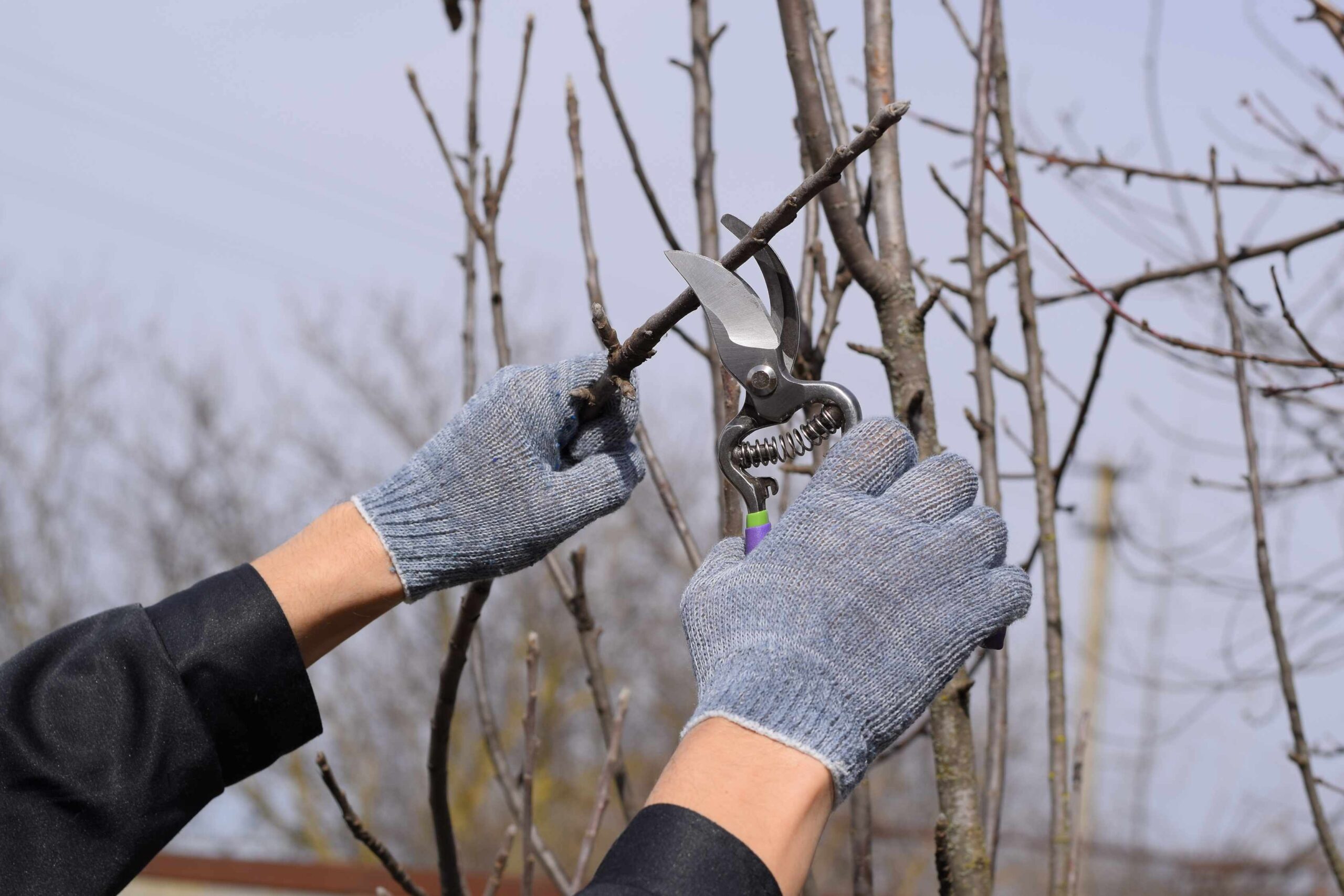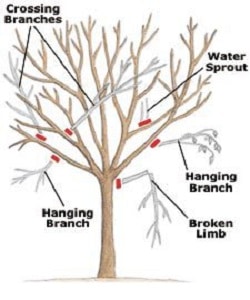The Art of Pruning: Why the Right Tools Matter
Pruning trees is an essential aspect of maintaining their health, promoting growth, and enhancing their aesthetic appeal. The right tools used for pruning trees can make a significant difference in achieving a professional finish. A well-pruned tree can add value to a property, improve curb appeal, and create a beautiful landscape. However, pruning can be a daunting task, especially for those without experience.
The benefits of pruning trees are numerous. Pruning helps maintain tree health by removing dead, diseased, or damaged branches. This process also promotes growth by allowing more sunlight to reach the remaining branches. Furthermore, pruning enhances the aesthetic appeal of trees by shaping them to maintain a desired form or size.
Having the right tools for pruning trees is crucial for achieving a professional finish. The wrong tools can lead to damage, injury, or even death. For instance, using a dull or poorly maintained tool can cause accidents, while using a tool that is too heavy or cumbersome can cause fatigue and strain. Therefore, it is essential to choose the right tools for the task at hand.
In the following sections, we will explore the different types of tools used for pruning trees, including hand pruners, loppers, pole saws, and pruning saws. We will also discuss the benefits and features of each tool, as well as provide tips on how to choose the right tool for your specific needs.
Hand Pruners: The Ultimate Tool for Precision Pruning
Hand pruners are a crucial tool for any tree pruning task. They are designed for precision pruning and are ideal for cutting small branches and stems. There are two main types of hand pruners: bypass pruners and anvil pruners. Bypass pruners are designed for cutting live branches and stems, while anvil pruners are better suited for cutting dead or diseased wood.
Bypass pruners are the most popular type of hand pruner. They have a curved or angled blade that allows for precise cuts and helps to prevent crushing the stem. Anvil pruners, on the other hand, have a straight blade that cuts against a flat surface, making them ideal for cutting thicker branches. Some popular hand pruners include the Felco F-210 and the ARS HP-VS8Z.
The Felco F-210 is a high-quality bypass pruner that is designed for precision pruning. It has a curved blade that allows for precise cuts and a comfortable grip that reduces fatigue. The ARS HP-VS8Z is an anvil pruner that is designed for cutting thicker branches. It has a straight blade that cuts against a flat surface, making it ideal for cutting dead or diseased wood.
When choosing a hand pruner, it’s essential to consider the type of pruning you will be doing. If you will be cutting live branches and stems, a bypass pruner is the best choice. If you will be cutting dead or diseased wood, an anvil pruner is the better option. Additionally, consider the size of the branches you will be cutting and choose a pruner with a blade that is suitable for the task.
Loppers: The Perfect Tool for Cutting Thicker Branches
Loppers are a type of pruning tool that is designed for cutting thicker branches than hand pruners. They are typically used for cutting branches that are too large for hand pruners, but too small for pruning saws. Loppers are available in two main types: bypass loppers and anvil loppers.
Bypass loppers are designed for cutting live branches and stems. They have a curved or angled blade that allows for precise cuts and helps to prevent crushing the stem. Anvil loppers, on the other hand, are better suited for cutting dead or diseased wood. They have a straight blade that cuts against a flat surface, making them ideal for cutting thicker branches.
Some popular loppers include the Fiskars PowerTooth Softgrip Lopper and the Corona FL 3460. The Fiskars PowerTooth Softgrip Lopper is a bypass lopper that is designed for cutting live branches and stems. It has a curved blade that allows for precise cuts and a comfortable grip that reduces fatigue. The Corona FL 3460 is an anvil lopper that is designed for cutting dead or diseased wood. It has a straight blade that cuts against a flat surface, making it ideal for cutting thicker branches.
When choosing loppers, it’s essential to consider the type of pruning you will be doing. If you will be cutting live branches and stems, a bypass lopper is the best choice. If you will be cutting dead or diseased wood, an anvil lopper is the better option. Additionally, consider the size of the branches you will be cutting and choose loppers with a blade that is suitable for the task.
Loppers are an essential tool for any tree pruning task. They provide the necessary leverage and cutting power to cut thicker branches, making them a valuable addition to any pruning toolkit. By choosing the right loppers for your specific needs, you can ensure that your pruning tasks are completed efficiently and effectively.
Pole Saws: Reaching New Heights in Tree Pruning
Pole saws are a type of pruning tool that is designed for cutting branches that are out of reach. They are typically used for pruning trees that are too tall to be reached with hand pruners or loppers. Pole saws are available in two main types: manual and powered.
Manual pole saws are a cost-effective option for pruning trees. They are typically made of a fiberglass or aluminum pole with a pruning saw attached to the end. Manual pole saws are ideal for pruning small to medium-sized trees and are a great option for those who want to avoid the noise and maintenance of powered pole saws.
Powered pole saws, on the other hand, are designed for heavy-duty pruning. They are typically made of a fiberglass or aluminum pole with a powered pruning saw attached to the end. Powered pole saws are ideal for pruning large trees and are a great option for those who need to prune multiple trees in a short amount of time.
Some popular pole saws include the Silky Hayauchi Pole Saw and the Jameson FG-6 Pole Saw. The Silky Hayauchi Pole Saw is a manual pole saw that is designed for pruning small to medium-sized trees. It has a 21-foot reach and a curved blade that allows for precise cuts. The Jameson FG-6 Pole Saw is a powered pole saw that is designed for heavy-duty pruning. It has a 12-foot reach and a straight blade that cuts through thick branches with ease.
When choosing a pole saw, it’s essential to consider the type of pruning you will be doing. If you will be pruning small to medium-sized trees, a manual pole saw is the best choice. If you will be pruning large trees, a powered pole saw is the better option. Additionally, consider the reach of the pole saw and choose one that is suitable for the height of the trees you will be pruning.
Pole saws are an essential tool for any tree pruning task. They provide the necessary reach and cutting power to prune branches that are out of reach, making them a valuable addition to any pruning toolkit. By choosing the right pole saw for your specific needs, you can ensure that your pruning tasks are completed efficiently and effectively.
How to Choose the Right Pruning Tool for Your Needs
Choosing the right pruning tool for your needs can be a daunting task, especially with the numerous options available in the market. However, by considering a few key factors, you can make an informed decision and select the best tool for your specific needs.
First and foremost, consider the type of tree you will be pruning. Different trees have different pruning requirements, and the right tool can make a significant difference in achieving a professional finish. For example, if you will be pruning a fruit tree, you may need a tool with a curved blade to navigate the tight spaces between the branches.
Next, consider the size of the branches you will be cutting. If you will be cutting small branches, a hand pruner or lopper may be the best choice. However, if you will be cutting larger branches, a pole saw or pruning saw may be more suitable.
Another important factor to consider is your personal preference. If you are comfortable with manual tools, a manual pole saw or pruning saw may be the best choice. However, if you prefer the convenience of powered tools, a powered pole saw or pruning saw may be more suitable.
Finally, consider the quality of the tool. A high-quality tool will last longer and perform better than a low-quality tool. Look for tools made from durable materials, such as stainless steel or fiberglass, and consider the warranty and customer support offered by the manufacturer.
By considering these factors, you can choose the right pruning tool for your specific needs and achieve a professional finish. Remember, the right tool can make a significant difference in the quality of your pruning, and investing in a high-quality tool will pay off in the long run.
Here are some steps to follow when choosing a pruning tool:
1. Determine the type of tree you will be pruning and the size of the branches you will be cutting.
2. Consider your personal preference for manual or powered tools.
3. Research different tools and read reviews to find the best option for your needs.
4. Consider the quality of the tool and the warranty and customer support offered by the manufacturer.
5. Make an informed decision and select the best tool for your specific needs.
Pruning Saw: A Versatile Tool for Cutting and Shaping
A pruning saw is a versatile tool that is used for cutting and shaping branches. It is a crucial tool for any tree pruning task, as it allows for precise cuts and helps to maintain the health and appearance of the tree.
There are several types of pruning saws available, including curved and straight blades. Curved blades are ideal for cutting branches that are in tight spaces, while straight blades are better suited for cutting larger branches.
Some popular pruning saws include the Silky Gomboy Curve Pruning Saw and the Felco F-600 Pruning Saw. The Silky Gomboy Curve Pruning Saw is a curved blade saw that is designed for cutting branches in tight spaces. It has a 14-inch blade and a comfortable grip that reduces fatigue. The Felco F-600 Pruning Saw is a straight blade saw that is designed for cutting larger branches. It has a 12-inch blade and a durable construction that withstands heavy use.
When choosing a pruning saw, it’s essential to consider the type of tree you will be pruning and the size of the branches you will be cutting. A curved blade saw is ideal for cutting branches in tight spaces, while a straight blade saw is better suited for cutting larger branches.
In addition to the type of blade, it’s also important to consider the quality of the saw. A high-quality saw will last longer and perform better than a low-quality saw. Look for saws made from durable materials, such as stainless steel or fiberglass, and consider the warranty and customer support offered by the manufacturer.
By choosing the right pruning saw for your specific needs, you can ensure that your pruning tasks are completed efficiently and effectively. A pruning saw is a versatile tool that can be used for a variety of tasks, from cutting and shaping branches to pruning and maintaining the health of your trees.
Some of the benefits of using a pruning saw include:
1. Precise cuts: A pruning saw allows for precise cuts, which helps to maintain the health and appearance of the tree.
2. Versatility: A pruning saw can be used for a variety of tasks, from cutting and shaping branches to pruning and maintaining the health of your trees.
3. Durability: A high-quality pruning saw will last longer and perform better than a low-quality saw.
Pruning Tool Maintenance: Tips for Keeping Your Tools in Top Condition
Pruning tools are an essential part of any tree pruning task. However, like any tool, they require regular maintenance to ensure they remain in top condition. Proper maintenance can help extend the life of your pruning tools, improve their performance, and prevent damage to your trees.
Cleaning is an essential part of pruning tool maintenance. After each use, clean your pruning tools with a soft brush or cloth to remove any debris or sap. This will help prevent rust and corrosion, and keep your tools in good condition.
Sharpening is another important aspect of pruning tool maintenance. Dull pruning tools can cause damage to your trees, and make pruning more difficult. Regular sharpening can help keep your pruning tools in top condition, and improve their performance.
Storing your pruning tools properly is also important. Store your pruning tools in a dry, secure location, away from direct sunlight and moisture. This will help prevent rust and corrosion, and keep your tools in good condition.
Some additional tips for maintaining your pruning tools include:
1. Regularly inspect your pruning tools for damage or wear. Replace any damaged or worn-out tools to ensure optimal performance.
2. Use a pruning tool sharpener to keep your pruning tools sharp and in top condition.
3. Apply a rust-inhibiting coating to your pruning tools to prevent rust and corrosion.
4. Store your pruning tools in a protective case or bag to prevent damage and keep them clean.
By following these tips, you can help keep your pruning tools in top condition, and ensure they remain a valuable asset for your tree pruning tasks.
Regular maintenance is essential for any tool, and pruning tools are no exception. By cleaning, sharpening, and storing your pruning tools properly, you can help extend their life, improve their performance, and prevent damage to your trees.
Conclusion: Mastering Tree Pruning with the Right Tools
Mastering tree pruning requires a combination of knowledge, skill, and the right tools. By understanding the importance of pruning trees and having the right tools for the job, you can achieve a professional finish and enhance the beauty and health of your trees.
The right tools used for pruning trees can make a significant difference in achieving a professional finish. From hand pruners and loppers to pole saws and pruning saws, each tool has its unique features and benefits. By choosing the right tool for the task at hand, you can ensure that your pruning tasks are completed efficiently and effectively.
In addition to having the right tools, it’s also important to consider the type of tree, branch size, and personal preference when pruning. By taking the time to choose the right tool and consider these factors, you can ensure that your pruning tasks are completed with precision and care.
By mastering tree pruning with the right tools, you can enhance the beauty and health of your trees. Pruning trees can help maintain their health, promote growth, and enhance their aesthetic appeal. By taking the time to learn about the different types of pruning tools and how to use them, you can become a skilled tree pruner and enjoy the many benefits that come with it.
In conclusion, having the right tools for pruning trees is essential for achieving a professional finish and enhancing the beauty and health of your trees. By understanding the importance of pruning trees and having the right tools for the job, you can master the art of tree pruning and enjoy the many benefits that come with it.




-1024x768_0.jpg)


